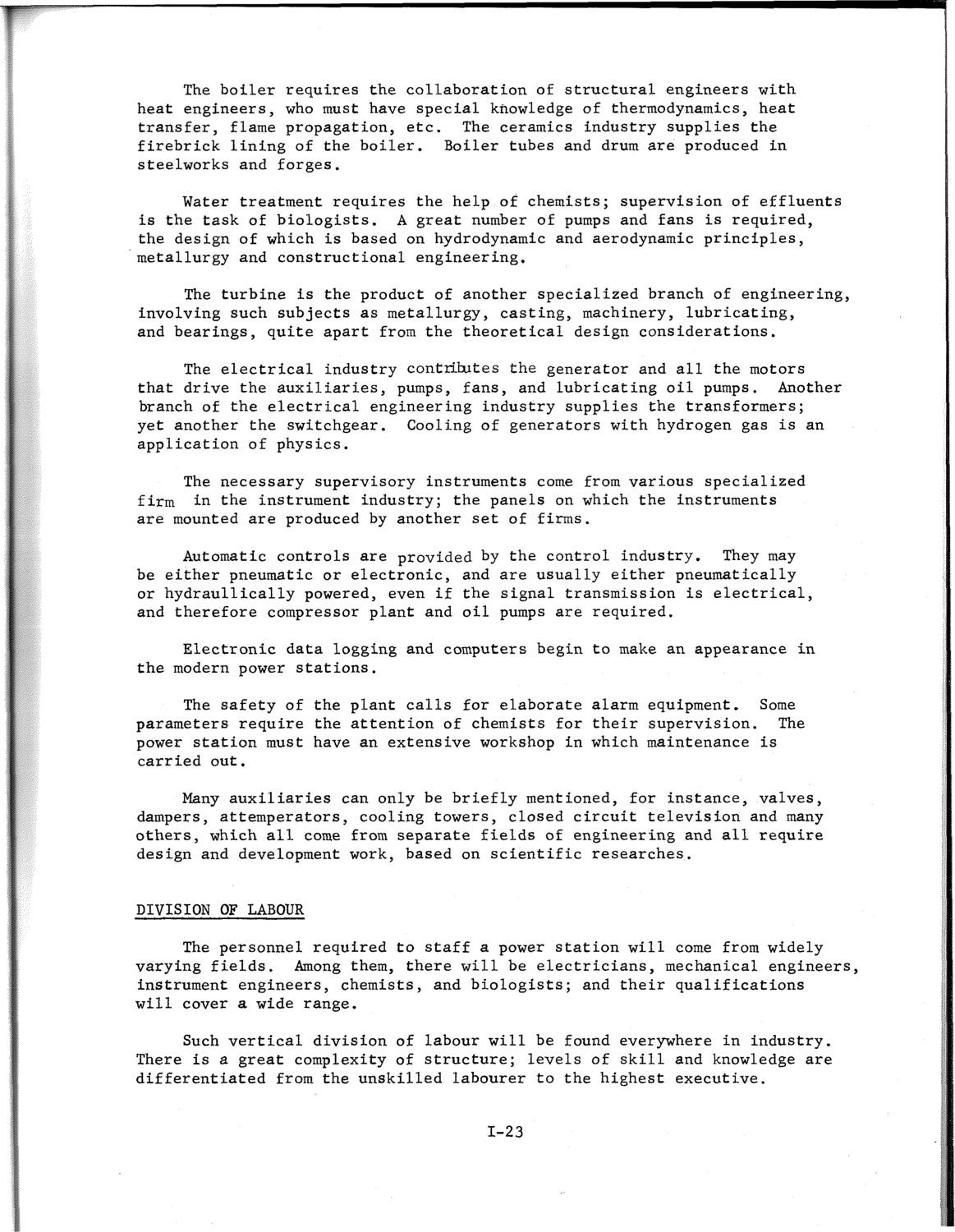| |
| |
Caption: SWE - Proceedings of the First International Conference of Women Engineers and Scientists
This is a reduced-resolution page image for fast online browsing.

EXTRACTED TEXT FROM PAGE:
The boiler requires the collaboration of structural engineers with heat engineers, who must have special knowledge of thermodynamics, heat transfer, flame propagation, etc. The ceramics industry supplies the firebrick lining of the boiler. Boiler tubes and drum are produced in steelworks and forges. Water treatment requires the help of chemists; supervision of effluents is the task of biologists. A great number of pumps and fans is required, the design of which is based on hydrodynamic and aerodynamic principles, metallurgy and constructional engineering. The turbine is the product of another specialized branch of engineering, involving such subjects as metallurgy, casting, machinery, lubricating, and bearings, quite apart from the theoretical design considerations. The electrical industry contributes the generator and all the motors that drive the auxiliaries, pumps, fans, and lubricating oil pumps. Another branch of the electrical engineering industry supplies the transformers; yet another the switchgear. Cooling of generators with hydrogen gas is an application of physics. The necessary supervisory instruments come from various specialized firm in the instrument industry; the panels on which the instruments are mounted are produced by another set of firms. Automatic controls are provided by the control industry. They may be either pneumatic or electronic, and are usually either pneumatically or hydraullically powered, even if the signal transmission is electrical, and therefore compressor plant and oil pumps are required. Electronic data logging and computers begin to make an appearance in the modern power stations. The safety of the plant calls for elaborate alarm equipment. Some parameters require the attention of chemists for their supervision. The power station must have an extensive workshop in which maintenance is carried out. Many auxiliaries can only be briefly mentioned, for instance, valves, dampers, attemperators, cooling towers, closed circuit television and many others, which all come from separate fields of engineering and all require design and development work, based on scientific researches. DIVISION OF LABOUR The personnel required to staff a power station will come from widely varying fields. Among them, there will be electricians, mechanical engineers, instrument engineers, chemists, and biologists; and their qualifications will cover a wide range. Such vertical division of labour will be found everywhere in industry. There is a great complexity of structure; levels of skill and knowledge are differentiated from the unskilled labourer to the highest executive. 1-23
| |